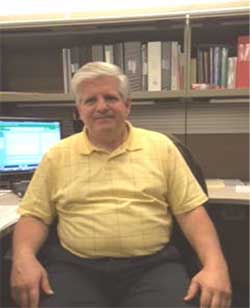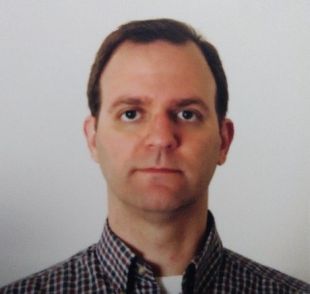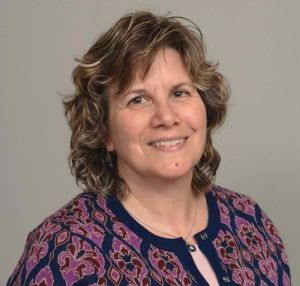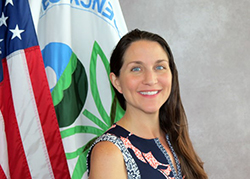FRTR Spring 2020 Meeting, Session 1: Bioremediation Advances - New Strategies, Optimization, and Performance Monitoring
Sponsored by: Federal Remediation Technologies Roundtable (FRTR)
The Spring 2020 meeting of the Federal Remediation Technologies Roundtable (FRTR) will be held as a two-part webinar on Friday, May 29 and Friday, June 5, 2020. As always, FRTR meetings are open to the public.
FRTR's objectives for this meeting are to:
- Review the state of the practice of bioremediation: Broad overview of where it is commonly applied, where it is still experimental, and what are the challenges.
- Discuss advances in bioremediation for organic and inorganic contaminants, including new approaches, optimization, and tools for monitoring technologies to determine successful performance.
- Review brief case studies to demonstrate how new technologies are being applied and optimized.
Session 1: Overview and Organic Contaminants
Overview of In-Situ Bioremediation Challenges and Technology Advancements
Abstract: This presentation will cover a brief overview of common challenges to the effective implementation of in-situ bioremediation projects for organic contaminants, as well as more recent technologies available to address these challenges or improve treatment performance. Specific topics to be covered include: alternative amendments to common single carbon sources; potential causes and actions to address limited or slow degradation of 1,2-dichloroethene and vinyl chloride; and amendment delivery in lower permeability, heterogeneous geology. A couple of short case studies of specific technologies implemented at Army sites will be included, as well as useful references/weblinks.
Case Studies of Advances in Bioremediation of Organics: Part 1
Abstract: This presentation will provide information on monitoring programs including the application of advanced tools associated with in situ bioremediation. Specific examples will be provided as well as additional information on advanced delivery mechanisms. Recent advances and applications of the cometabolic treatment and natural attenuation of emerging contaminants such as 1,4-dioxane will also be presented.
Case Studies of Advances in Bioremediation of Organics: Part 2
Abstract: Several case studies will be presented that highlight advances in bioremediation approaches and performance monitoring for contaminants that include chlorinated ethenes, chlorinated benzenes, and per- and polyfluoroalkyl substances (PFAS). In the first case study, a bioremediation approach combining anaerobic and aerobic cultures, bioaugmented together on granular activated carbon in a passive reactive barrier, was developed and field tested for treatment of chlorinated benzenes at aerobic-anaerobic interfaces. The next two case studies focus on bioremediation of chlorinated ethenes in fractured rock and include (1) using microbial community analyses to track the effects of bioaugmentation and cause of DCE/VC stall in permeable units and (2) developing a field borehole test/modeling approach to quantify diffusion and degradation in unfractured matrix, with a focus on defining biodegradation rates at the matrix surface. Lastly, new laboratory research on anaerobic PFAS biodegradation with chlorinated solvent co-contaminants will be presented. Some of the bioremediation assessment techniques that will be highlighted include passive microbial community collection, in situ microcosms with Bio-Traps® to utilize molecular biology and stable isotope probing tools, advanced qPCR methods, and next generation sequencing.
Join us for Session 2 on June 5th: Current Research and Inorganic Contaminants (registration required).
Upcoming FRTR Presents Series Webinars
FRTR Presents Series Archives
- FRTR Presents...Advancing Remediation: Lessons Learned and Innovative Approaches at Federal Facilities (Nov 17, 2025)
- FRTR Spring 2025 General Meeting: Innovative Approaches to Characterization and Survey of Complex Mixtures of Contaminants in Support of End-State Regulatory Compliance (Session 2 - Technologies) (May 14, 2025)
- FRTR Spring 2025 General Meeting: Innovative Approaches to Characterization and Survey of Complex Mixtures of Contaminants in Support of End-State Regulatory Compliance (Session 1 - Strategies) (May 13, 2025)
- FRTR Presents ... TRAC — A Tool for Tracking Groundwater Restoration Across Multiple Sites (Dec 4, 2024)
- FRTR Fall 2024 General Meeting: Source Differentiation and Risk Assessments for Sites Impacted by PFAS (Oct 29, 2024)
- FRTR Spring 2024 General Meeting: Artificial Intelligence and Machine Learning to Optimize Site Remediation (May 21, 2024)
- FRTR Presents...Recent Advances in PFAS Characterization Technologies (Feb 28, 2024)
- FRTR Fall 2023 General Meeting: Recent Advances in PFAS Characterization Technologies (Nov 7, 2023)
- FRTR Spring 2023 General Meeting: Best Practices and Recent Technical Advances in Site Characterization and Conceptual Site Model Development (May 16, 2023)
- Application of Robotics, Machine Learning and Artificial Intelligence Technologies to Site Remediation (Jun 13, 2022)
- Application of Robotics, Machine Learning and Artificial Intelligence Technologies to Site Remediation (Jun 6, 2022)
- FRTR Fall 2021 Meeting, Two Part Series on Remedy Protectiveness and Climate Resilience in Site Cleanups: Session 2 (Nov 15, 2021)
- FRTR Fall 2021 Meeting, Two Part Series on Remedy Protectiveness and Climate Resilience in Site Cleanups: Session 1 (Nov 8, 2021)
- FRTR at 30 Years: Grand Challenges and Opportunities for Advancing Remediation Technologies, Session 2 (May 26, 2021)
- FRTR at 30 Years: Grand Challenges and Opportunities for Advancing Remediation Technologies, Session 1 (May 19, 2021)
- FRTR at 30 Years: A Retrospective of Applied Innovative Technologies for Successful Site Remediation (Nov 18, 2020)
- FRTR Spring 2020 Meeting, Session 2: Bioremediation Advances - New Strategies, Optimization, and Performance Monitoring (Jun 5, 2020)
- FRTR Spring 2020 Meeting, Session 1: Bioremediation Advances - New Strategies, Optimization, and Performance Monitoring (May 29, 2020)
- FRTR Presents...Synthesizing Evolving Conceptual Site Models (CSMs) with Applicable Remediation Technologies (Apr 1, 2020)
- FRTR Presents...Modeling in Support of Site Remediation, Session 2 (Dec 4, 2019)
- FRTR Presents...Modeling in Support of Site Remediation, Session 1 (Nov 26, 2019)
- FRTR Presents...Per- and Polyfluoroalkyl Substances (PFAS) Emerging Characterization and Remedial Technologies, Session 2 (Sep 26, 2019)
- FRTR Presents...Per- and Polyfluoroalkyl Substances (PFAS) Emerging Characterization and Remedial Technologies, Session 1 (Jun 20, 2019)
- FRTR Presents...Evolution of Subsurface Remediation: Lessons Learned from Technical Challenges to Achieving Cleanup Goals - Part 2 (Oct 17, 2018)
- FRTR Presents...Evolution of Subsurface Remediation: Lessons Learned from Technical Challenges to Achieving Cleanup Goals - Part 1 (Sep 27, 2018)
- FRTR Presents...Remediation Technologies for Radionuclides and Heavy Metals in Soil, Ground Water and Sediments, Session 2 (Mar 28, 2018)
- FRTR Presents...Remediation Technologies for Radionuclides and Heavy Metals in Soil, Ground Water and Sediments, Session 1 (Feb 28, 2018)
- FRTR Presents...Heavy Metals-Mining Site Characterization and Treatment Session 3 (Aug 10, 2017)
- FRTR Presents...Heavy Metals-Mining Site Characterization and Treatment Session 2 (Jul 26, 2017)
- FRTR Presents...Heavy Metals-Mining Site Characterization and Treatment Session 1 (Jul 10, 2017)
- An Introduction to Green and Sustainable Remediation: What, Who, Why, and How (Jun 10, 2015)
- FRTR Presents: Large-Dilute Plumes: Challenges and Opportunities (May 1, 2013)
Accessibility, Recording, and Content Disclaimer
Rehabilitation Act Notice for Reasonable Accommodation
It is EPA's policy to make reasonable accommodation to persons with disabilities wishing to participate in the agency's programs and activities, pursuant to the Rehabilitation Act of 1973, 29 U.S.C. 791. Any request for accommodation should be made to at or , preferably one week or more in advance of the webinar, so that EPA will have sufficient time to process the request. EPA would welcome specific recommendations from requestors specifying the nature or type of accommodation needed. Please note that CLU-IN provides both alternate phone call-in options and closed captioning for all webinars, and requests for these specific accommodations are not necessary.
Webinar Recording
By participating in this CLU-IN webinar, you automatically agree to authorize recording of audio and visual content presented during this live event and consent to subsequent use of this recording in the public domain by the U.S. Environmental Protection Agency. This recording may include questions, comments and poll responses provided by you during the live event in addition to your name, voice, image or likeness. This recording will be made available after the conclusion of the live event as part of the CLU-IN webinar archives, and will remain available indefinitely. If you do not wish to consent to the recording, please do not join the live event, and contact Jean Balent at 202-566-0832 or balent.jean@epa.gov to discuss your concerns.
Content Disclaimer
This webinar is intended solely to provide information to the public. The views and opinions expressed as part of this webinar do not necessarily state or reflect those of the U.S. Environmental Protection Agency. It is not intended, nor can it be relied upon, to create any rights enforceable by any party in litigation with the United States, or to endorse the use of products or services provided by specific vendors. With respect to this webinar, neither the United States Government nor any of their employees, makes any warranty, express or implied, including the warranties of merchantability and fitness for a particular purpose, or assumes any legal liability or responsibility for the accuracy, completeness, or usefulness of any information, apparatus, product, or process disclosed, or represents that its use would not infringe privately owned rights.
Presenters:
 Mark Rothas, U.S. Army Corps of Engineers (Mark.S.Rothas@usace.army.mil)
Mark Rothas, U.S. Army Corps of Engineers (Mark.S.Rothas@usace.army.mil)
Mark Rothas has over 35 years of environmental remediation and regulatory compliance experience working in manufacturing, corporate, consulting, and USACE positions. He has performed all facets of remediation system design, construction oversight, operation and maintenance, and project management. For USACE, Mr. Rothas has worked as a remediation technology subject matter expert as a member of its Environmental Center of Expertise, and coordinates its internal programs involving technology sharing and FUDS project remediation optimization reviews. He is also an instructor for USACE training classes involving remediation technologies and management of complex groundwater remediation projects, and has participated on ITRC complex sites management and PFAS work teams. Mr. Rothas has a B.S. in Chemical Engineering from the University of Illinois and an MBA from Roosevelt University.
 Anthony Danko, Naval Facilities Engineering and Expeditionary Warfare Center (anthony.danko@navy.mil)
Anthony Danko, Naval Facilities Engineering and Expeditionary Warfare Center (anthony.danko@navy.mil)
Dr. Danko serves as an Environmental Engineer in the Environmental Restoration Division at the Naval Facilities Engineering and Expeditionary Warfare Center (NAVFAC EXWC). He is involved in various NAVFAC efforts and initiatives, including Optimization and the testing and demonstration of various innovative technologies. His current interests include RDT&E and technical support to Navy site mangers with a variety of compounds, including chlorinated solvents, petroleum hydrocarbons, and emerging contaminants, such as PFAS and 1,4-Dioxane. Dr. Danko is also a licensed professional engineer.
 Michelle Lorah, Ph.D., U.S. Geological Survey (mmlorah@usgs.gov)
Michelle Lorah, Ph.D., U.S. Geological Survey (mmlorah@usgs.gov)
Dr. Michelle Lorah is a Research Hydrologist with the U.S. Geological Survey in the Maryland-Delaware-DC Water Science Center, where she directs the Fate and Bioremediation Team. She has a B.S. in Geosciences and Marine Science from Penn State University, M.S. in Environmental Science from the University of Virginia, and Ph.D. in Environmental Chemistry through the Marine-Estuarine-Environmental Sciences Program at the University of Maryland. She leads multiple projects focused on understanding contaminant fate and microbial processes in complex environments, including wetlands and fractured rock, with the goal of defining natural attenuation and developing bioremediation technologies to treat water resources and improve environmental health. Much of her research has focused on halogenated organic contaminants, including chlorinated ethanes and ethenes, chlorinated benzenes, and PFAS (per- and polyfluoroalkyl substances). For more information, please refer to Dr. Lorah's USGS profile.
Moderators:
 Jean Balent, U.S. EPA Technology Innovation and Field Services Division (balent.jean@epa.gov or 202-566-0832)
Jean Balent, U.S. EPA Technology Innovation and Field Services Division (balent.jean@epa.gov or 202-566-0832)
Ms Balent is on the staff of the EPA's Technology Innovation and Field Services Division where she has worked to collect and disseminate hazardous waste remediation and characterization information since 2003. Ms Balent manages the Clean Up Information Network website and actively supports online communication and collaboration resources available to EPA. She formerly worked with the US Army Corps of Engineers Environmental Engineering Division in the Buffalo District. Ms Balent was also a member of the SUNY-Buffalo Groundwater Research Group where she constructed and tested large scale models of groundwater flow. Ms Balent has also conducted research relating to the Great Lakes, environmental remediation, and brownfields re-development. She holds a Bachelor's degree in environmental engineering from SUNY-Buffalo and a Master's degree in Information Technology from AIU.
 Cindy Frickle, U.S. EPA Office of Superfund Remediation and Technology Innovation (frickle.cynthia@epa.gov or 202-566-0927)
Cindy Frickle, U.S. EPA Office of Superfund Remediation and Technology Innovation (frickle.cynthia@epa.gov or 202-566-0927)
Cindy Frickle is a physical scientist with EPA's Superfund program where she reviews and propagates technical information to site cleanup professionals through Clu-In, EPA forums, and interagency channels. Prior to joining EPA, she spent time characterizing contaminated sites, coring sediments, studying microbes, and teaching. She completed her Biogeology MS and Geology BS in the University of Minnesota's School of Earth Sciences.
Webinar Slides and References:
Webinar Slides and References:
-
 Slide Presentation for Mark Rothas; U.S. Army Corps of Engineers (6.92MB/PDF)
Slide Presentation for Mark Rothas; U.S. Army Corps of Engineers (6.92MB/PDF)
-
 Slide Presentation for Anthony Danko, NAVFAC EXWC (3.26MB/PDF)
Slide Presentation for Anthony Danko, NAVFAC EXWC (3.26MB/PDF)
-
 Slide Presentation for Michelle Lorah, Ph.D.; U.S. Geological Survey (22.8MB/PDF)
Slide Presentation for Michelle Lorah, Ph.D.; U.S. Geological Survey (22.8MB/PDF)
Additional Resources:
Thank you for participating in our webinar. We would like to receive any feedback you might have that would make this service more valuable.
Help & FAQs
Adobe Connect Resources
This seminar will be delivered through Adobe® Connect™ with streaming audio delivered through your computer speakers or headphones. We strongly encourage you to test your computer or mobile app prior to attending this seminar using the links below. Technical support on the day of the seminar will be very limited and subject to significant delays.
- Adobe® Connect™ Meeting Connection Diagnostic & Troubleshooting Tips
- Adobe® Connect™ Mobile Apps
- Adobe® Connect™ Visual Quick Start Guide (754KB/2pp/PDF)
Rehabilitation Act Notice for Reasonable Accommodation
It is EPA's policy to make reasonable accommodation to persons with disabilities wishing to participate in the agency's programs and activities, pursuant to the Rehabilitation Act of 1973, 29 U.S.C. 791. Any request for accommodation should be made to at or , preferably one week or more in advance of the seminar, so that EPA will have sufficient time to process the request. EPA would welcome specific recommendations from requestors specifying the nature or type of accommodation needed, such as closed captioning.
with any additional questions
If you have a suggested topic or idea for a future CLU-IN internet seminar, please contact:
Technology Integration and Information Branch
PH: 202-566-0832 | Email: balent.jean@epa.gov
Technology Integration and Information Branch
PH: 202-566-0875 | Email: adam.michael@epa.gov




